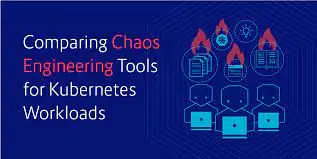Introduction
In the intricate world of Kubernetes, ensuring the resilience of applications is paramount. The need for Chaos Testing tools arises from the inherent complexities and uncertainties in distributed systems. In this article, we’ll explore various Chaos Testing tools designed specifically for Kubernetes environments, providing insights into their features, benefits, and how they contribute to building robust and resilient containerized applications.
The Problem Statement
Complexities in Distributed Systems
Kubernetes, with its dynamic and distributed nature, introduces a host of challenges for developers and operators. Network partitions, node failures, and unpredictable events can disrupt the smooth operation of applications, potentially leading to downtime, performance degradation, or other undesirable outcomes.
Examples
- Network Failures: In a microservices architecture deployed on Kubernetes, network failures can result in communication breakdowns between services. Without adequate resilience mechanisms, such disruptions can cascade, leading to service outages.
- Node Outages: When a Kubernetes node fails unexpectedly, applications should gracefully handle the redistribution of workloads to healthy nodes. Failure to do so can result in service degradation and impact user experience.
- Resource Contentions: In a multi-tenant Kubernetes cluster, resource contentions may occur. One application consuming excessive resources could adversely affect others, leading to performance bottlenecks or even complete service unavailability.
Let us take a look at some of the chaos testing tools available to test the reliability and resilience of your Kubernetes clusters.
Chaos Testing Tools
1. Chaos Mesh

Chaos Mesh is an open-source Chaos Engineering platform tailored for Kubernetes. It offers a rich set of features, including pod chaos, network chaos, and even time travel chaos scenarios. Chaos Mesh provides fine-grained control over the chaos experiments, allowing users to precisely simulate real-world failure scenarios.
Benefits:
- Extensive Experimentation: Chaos Mesh supports a wide array of experiments, enabling users to simulate various failure scenarios, such as pod failures, network delays, and clock skews.
- Observability: The tool provides detailed observability into the chaos experiments, helping users analyze the impact of failures on their applications.
2. LitmusChaos

LitmusChaos is an open-source Chaos Engineering platform specifically designed for Kubernetes and cloud-native environments. It offers a catalog of chaos experiments, enabling users to assess the resilience of their applications against various failure scenarios.
Benefits:
- Experiment Catalog: LitmusChaos provides a comprehensive catalog of chaos experiments, covering aspects like pod deletion, network latency, and application-level faults.
- Integration: The platform seamlessly integrates with popular CI/CD pipelines, allowing for automated chaos testing in continuous integration workflows.
3. Gremlin
Gremlin is a widely adopted Chaos Engineering platform that extends its support to Kubernetes environments. It offers a straightforward and intuitive approach to creating chaos experiments, allowing users to assess how their applications behave under stress.
Benefits:
- Simplicity: Gremlin emphasizes simplicity, making it easy for users to design and execute chaos experiments without extensive setup.
- Multi-Cloud Support: Gremlin provides multi-cloud support, making it versatile for organizations with diverse infrastructure deployments.
4. Kube-monkey
Kube-monkey is a chaos testing tool that focuses on introducing random disruptions in a Kubernetes cluster. It is designed to validate the system’s resilience by randomly terminating pods, simulating the unpredictable nature of real-world failures.
Benefits:
- Random Disruptions: Kube-monkey introduces random disruptions, helping organizations assess how well their applications cope with unpredictable failures.
- Lightweight: As a lightweight tool, Kube-monkey is easy to deploy and can run seamlessly in production environments.
5. PowerfulSeal
PowerfulSeal is an open-source chaos engineering tool specifically crafted for Kubernetes. It allows users to simulate various infrastructure failures, such as node outages and network partitions, to evaluate the robustness of their applications.
Benefits:
- Infrastructure Failures: PowerfulSeal focuses on simulating infrastructure-level failures, making it valuable for testing the resilience of applications against broader system disruptions.
- Customizable Scenarios: Users can customize chaos scenarios, tailoring the chaos experiments to match specific failure conditions.
Benefits of Chaos Testing in Kubernetes:
- Identifying Weaknesses: Chaos testing reveals vulnerabilities and weaknesses in applications, helping teams proactively address potential issues before they impact users.
- Enhanced Resilience: By subjecting applications to controlled chaos, teams can enhance the overall resilience of their systems, ensuring they can withstand unforeseen challenges.
- Automated Verification: Chaos testing tools, when integrated into CI/CD pipelines, automate the verification of application resilience, allowing for continuous assessment without manual intervention.
Conclusion
In the intricate dance of distributed systems orchestrated by Kubernetes, the call for resilience echoes louder than ever. Chaos, in controlled and deliberate doses, becomes the litmus test for the fortitude of applications. The problem statement, with real-world examples of network failures, node outages, and resource contentions, underscores the critical need for Chaos Testing tools.
Chaos Mesh, a maestro in orchestrated chaos, provides a symphony of experiments, allowing users to fine-tune the unpredictability of real-world failure scenarios. LitmusChaos, with its extensive catalog, elevates chaos testing into a routine, seamlessly integrating with CI/CD pipelines for automated resilience verification.
Gremlin, a stalwart in the Chaos Engineering realm, simplifies chaos experimentation, empowering users to stress-test applications and assess their behavior under duress. Kube-monkey, with its random disruptions, brings the chaos of unpredictability, revealing how applications respond to the whims of a capricious Kubernetes environment.
PowerfulSeal, tailored for Kubernetes, introduces chaos on the infrastructure stage, allowing users to simulate node outages and network partitions, scrutinizing the robustness of applications against broader system disruptions.
As we navigate the ever-evolving landscape of Kubernetes, chaos testing becomes a rite of passage. It is not merely a practice; it is a commitment to building resilient, fault-tolerant applications that can weather the storms of uncertainty. Through these Chaos Testing tools, organizations can transform chaos into a catalyst for continuous improvement, ensuring that their applications not only survive but thrive in the dynamic and unpredictable world of Kubernetes.




